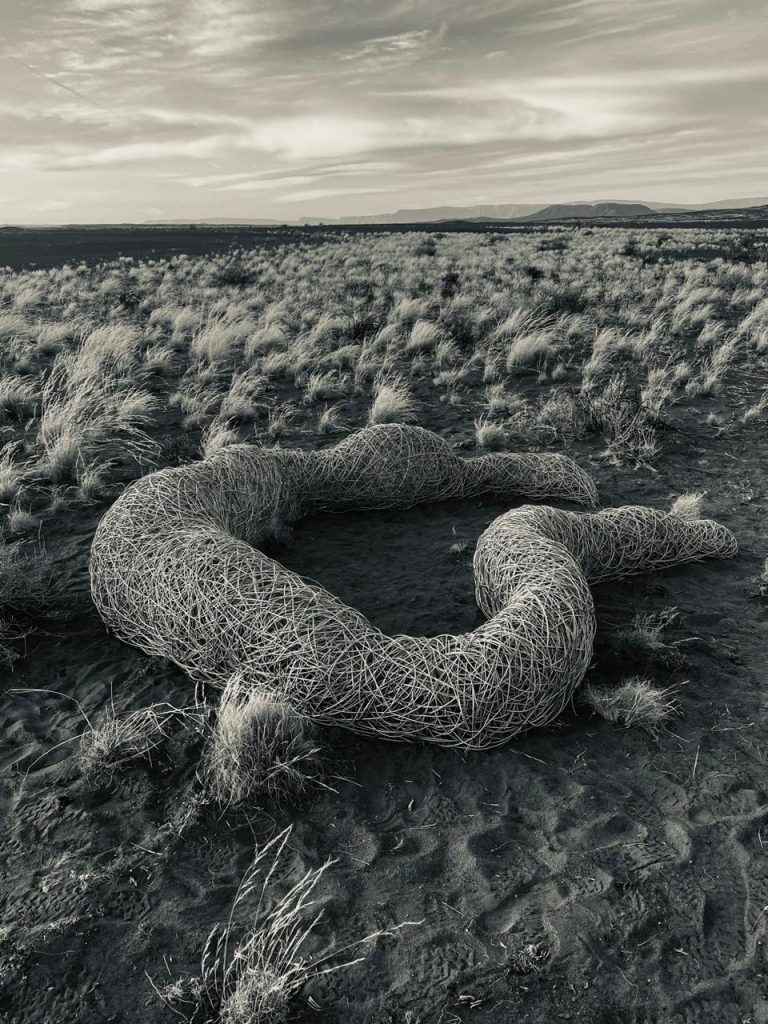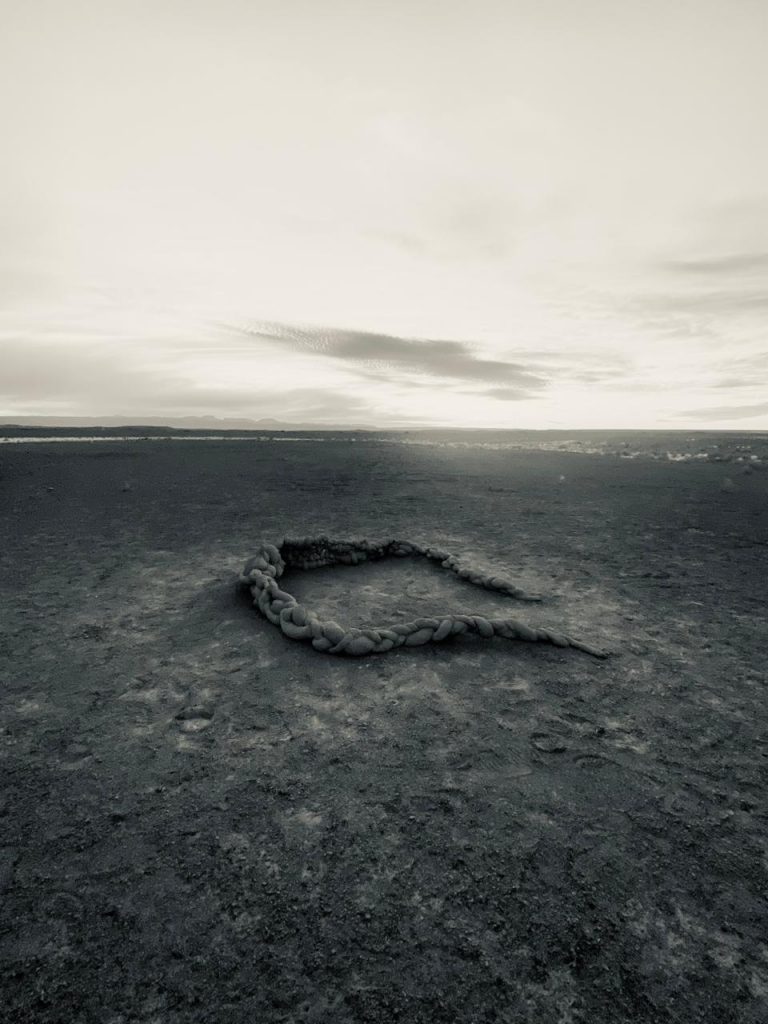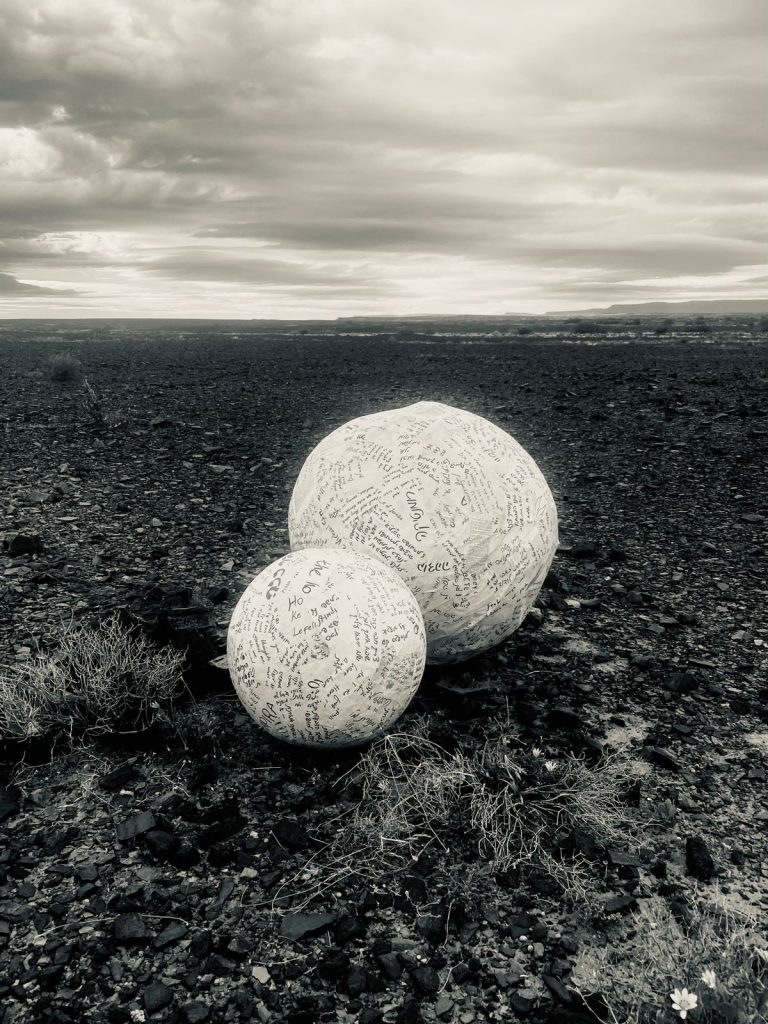
The Nomad is a series of stories, fascinations, encounters, observations, experiences, joy of the moments by me, Ulrike Reinhard – all around my travels. Stay tuned!
Ulrike Reinhard is The Nomad 🙂
The Tankwa Artscape is an artist residency program in South Africa’s rock desert, the Tankwa Karoo. It takes place at the Tented Camp in the Stonehenge Private Nature Reserve – the spot which hosted Africa Burn (a Burning Man regional festival) for many years. You still find many Africa Burn remains in their scrapyard.
The Tankwa Artscape is in its sixth year – and when you look at the concept and the procedure/process nothing much has changed since its beginning. Once the artists are selected, it is a very much an open process and every participant is challenged to find its own way in its very own pace in this harsh yet beautiful environment. Considering what is the ‘right intention’ is where the artist’s work begins. How much does the artist want to disturb this pristine landscape? What kind of footprint does it want to leave behind? How does it honour (or not) the people who lived their at first? How does it see the landscape? It happens quite often that the idea the artist applied with changes completely after it arrived at the Karoo, sometimes drastic adjustments are made and other times a few nudges here and there and the original idea lives on. Just like every year we’ve seen this again in April 2023.
For me it was a first at Artscape. A friend introduced me to Kim Goodwin, one of the organizers of the program, while I was travelling in South Africa in 2022. I met Kim, we quickly connected and he invited me to join the program. Later I met Leli Hoch, another member of the Artscape Not For Profit Organisation, and then I finally decided to become part of it in 2023. I love the desert and remote areas and therefore I was very much looking forward to experience the Karoo. My idea was to somehow document the event – not in photos but rather in personal conversations with all the participants. The result is a series of podcasts which reflect the diversity of the artists, their quite different approaches in their work and ways of expressing it. I had much fun doing this and learned a lot about the people.
Here is the playlist of all the podcasts:
I am writing this article two weeks after I’ve left the Karoo – meanwhile a lot of things have happened and I travelled back to Europe. Looking back there are really a few things which stuck with me and stood out – besides Tina’s art of cooking, baking, creating and gently involving us as kitchen fairys. I’ve summarized them in the following:
- I liked the diversity of the group – all in all 14 artists participated, two were working closely together. It was a nice mix of colour, culture, age and social backgrounds. And the diversity is reflected or could be seen in the way they worked and dealt with the environment and moved on with their work.
- The first long walk in solitude the morning after we arrived. It was a beautiful start to enjoy the rock desert, see and feel the environment and find orientation. The silence and the endless views are impressive and I felt so small, so meaningless in a very comfortable way. A good training to get rid of your ego 🙂
- The “program” of the residency emerged according to the needs and desires of the participants – in the first two days the participants were shown the land and various art objects from earlier residencies, simply to understand what will work and what won’t. The art shouldn’t disturb any horizontal line for example was one “rule” which was pointed out. After that the participants had their personal freedom and the possibility to really find “their own” way. Assistance was given when asked for.
- Support within the group – the “community” became the important social fabric during the two weeks. It allowed everyone to fall, fail and get up again stronger, more complete. There was a lot of love, understanding and tolerance among each and everyone. The participants spoke freely about their experiences no matter what they were – many of them in very colourful ways, using many adjectives to describe their “inner” world.
- The circle times in the evenings I felt were of great importance for the artists. I was then when they connected with each other on a regular basis and found their common ground of sharing. Everyone would share what they lived through the day – frustration, enthusiasm, fear and joy, everything had its place.
- The importance to find the “right spot” for the art piece / performance and the relief and happiness when the spot was found was the red thread in many conversations during the first week. I was truly amazed how sensitive, in detail and care this was discussed on both sides, the organizers and the artists. The impact on and the disturbance of the landscape was a big issue. I was actually happy that we had quite some performances where the remains were basically none. Yet there wasn’t one art work at the end which disrupted or disturbed – they all fit beautifully in the landscape as you can see in Tina Bester’s photos below. The two sculptures at the left are made by Jette Mellgren and Gina van der Ploeg, at the right the “Tumbleweed” by Daphna Shavit.



- And yes, I loved the silver house I stayed in with all its mosquitos and its precious sun rise view!
And if someone would ask me what my favourite art pieces or performances were, without any doubt I’d say Sisonke’s early morning Rebirth and Matlali’s music performance. They both combined the old wisdom of the land, cherished it as something precious and valuable and found their very own style to translate it into a piece of art. Both happenings really spoke to me, I could connect. An dI guess this is what art in general is all about.
Matlali mixed electronic computer generated sound bites with ancient string instruments she had built on her own and her voice added in her mother tounge archaic vibes. The sound travelled far in this landscape and the spot she had chosen, the rock formationen she had built (death and life) were just the most perfect setting for her performance. The red blanket she was wearing could be seen from afar.
Matlali’s performance
Sisonke went even one step further and made us an active part of his performance. He had built a huge circle out of small rocks, divided into four parts – each on eof them representing an element. A small path was laid out inside each, almost like a labyrinth because not every path would garantee passage to “enter” the next. Before we walked he toured the circle while playing four different ancient instruments – showing us which way to go. At the end he was welcoming everyone in the circle he had laid out in the center of the piece. While we were walking on our own and passing the elements we were reflecting on our strengths and weaknesses, fears and wishes, what we want to let go and what we want to live for. A “cleaning” or healing process. He ended with a short music meditation.
What I took home from Sisonke’s interactive performance was a more precise understanding for myself (and I can only talk about myself) of what rebirth actually is. It’s a circle. During my “life” I live through various of such circles – every time I let go a bit more and get a better understanding what I am here for.
Thank you for that!
To dig a little bit deeper into Sisonke’s way of thinking and working, do listen to his podcast:
Overall I am still deeply impressed by the openness of all the participants, their commitment and respect, and above all their depth of thought especially among the young participants. To experience a group like this gave me hope for our future! Nothing to worry about! Thank you for this!
Thank you Kim and Leli for having me, and thank you JP for taking so much care for this paradise called Stonehenge!
It was an honour to be and work with you!
And it was pure bliss to experience this landscape/more or less empty space for two weeks !